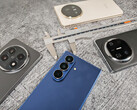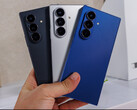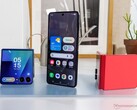Verdict - The Galaxy Z Fold7 impresses with its design upgrade
The Galaxy Z Fold7 has eliminated the largest argument against it, now presenting itself as a slim foldable that is able to offer a high performance, good camera, and decent battery life. In addition, it also includes UWB and an IP48 certification.
Although the SoC performance turns out lower in the benchmarks, which can probably also be traced back to the weaker cooling, this doesn't make much of a difference in everyday operation. The speakers also turn out worse in our test than those of the Fold6. Both of those issues are probably due to the slimmer build.
Pros
Cons
Price and Availability
All the color and storage versions of the Galaxy Z Fold7 are available in the Samsung online shop starting from ~$2000. It is currently slightly more affordable from Amazon.
Table of Contents
- Verdict - The Galaxy Z Fold7 impresses with its design upgrade
- Specifications: Samsung Galaxy Z Fold7
- Case and Equipment - Galaxy Fold7 with Corning Gorilla Glass Ceramic 2
- Software and Sustainability - Seven years of updates for the Galaxy Z Fold7
- Cameras - 200 MP sensor from the S25 Ultra
- Displays - Foldable 8-inch OLED with high brightness
- Additional Measurements and Benchmarks of the Galaxy Z Flip7
- Notebookcheck Overall Evaluation
- Possible Alternatives in Comparison
Samsung listened to the users asking for a slimmer foldable and created one of the slimmest of its kind. This is accompanied by a new sensor for the main camera, but on the other hand, the pen support has been removed from the Galaxy Z Fold7.
The price starts at an MSRP of around 2000 USD (12/256 GB), with the medium model (12/512 GB) costing ~2120 USD and the most expensive version (16/1024 GB) costing ~2420 USD.
Specifications: Samsung Galaxy Z Fold7
Case and Equipment - Galaxy Fold7 with Corning Gorilla Glass Ceramic 2
The Samsung Galaxy Z Fold7 measures only 4.2 mm (0.165 in; Fold6: 5.6 mm / 0.22 in) unfolded, which brings it to 8.9 mm (0.35 in; Fold6: 12.1 mm / 0.476 in) when folded up. While this doesn't sound like much of a difference, it makes a huge difference in everyday operation. The Fold7 is available in four different color versions, with Mint being exclusively available from the Samsung Store. The workmanship is convincing, and the foldable is also waterproof and protected from dust according to the IP48 standard. Although it is relatively difficult to open the display from its folded state, this also means that the hinge can hold the display in the selected position across a wide range of opening angles. It is annoying that the camera sticks out so far, which makes the smartphone wobble a lot when it is placed flat on a table.
While the display is protected by Gorilla Glas Ceramic 2, the back uses Gorilla Glas Victus 2. A disadvantage of the new design is that S Pen support was removed.
The linear vibration motor provides crisp haptic feedback. The configurable power button also houses the capacitive fingerprint sensor, which at times may need a second try to identify the stored fingerprints. Alternatively or additionally, you can also use face recognition via the front cameras. The voice quality during phone calls is very good.
Software and Sustainability - Seven years of updates for the Galaxy Z Fold7
The Samsung Galaxy Z Fold7 is delivered with Google Android 16 and One UI 8.0 and will be provided with version updates and security patches for seven years (until 7/31/2032). The Galaxy AI functions known from the Galaxy S25 series can also be found on the Fold7.
In terms of sustainability, Samsung provides some transparency, offering a report for its foldable as well as comparatively detailed information on the use of recycled materials. Some repairs can also be done by the users themselves, with Samsung providing replacement parts as well as instructions.
Cameras - 200 MP sensor from the S25 Ultra
One obvious difference to the predecessor is the fact that the Galaxy Z Fold7 doesn't continue to use a camera underneath the screen in the foldable display. The two front cameras are now nominally identical, but while the one on the cover offers a focal length of 23 mm, the camera in the foldable panel has 17 mm. The quality is decent, allowing for attractive recordings in good light conditions.
In the triple-camera system on the back, Samsung has upgraded the main sensor to 200 MP, supposedly using the same sensor as in the Galaxy S25 Ultra. The other cameras remain unchanged from the Fold6. Overall, the Fold7 produces an attractive image quality and offers versatile options, also because the additional Expert RAW camera app is available. The two additional lenses also deliver good results in good light conditions. When zooming beyond 5x enlargement (115 mm), the quality of the results drops visibly.
You can record videos with the two front cameras in Ultra HD at up to 60 FPS. Additionally, the main camera also supports 8k (30 FPS) including Log format and in UHD also HDR.



Displays - Foldable 8-inch OLED with high brightness
The size of the foldable main display of the Samsung Galaxy Z Fold7 has increased slightly compared to the predecessor and now offers a display diagonal of 8 inches (20.32 cm). The resolution is sharp and the calibration is good as well.
Even though the brightness is similar to that of the predecessor, it turns out minimally darker in our test. But you shouldn't be able to notice the difference with your bare eyes in everyday operation. With its high APL brightness, the display is also well-suited for using it outdoors - at least as long as the brightness is controlled by the brightness sensor. Without that, the maximum possible is 419 cd/m². However, if you activate the Additional brightness option, you can get up to 703 cd/m².
Users who are sensitive to display flickering might run into problems when using the Fold7, since the frequency isn't particularly high, and Samsung still doesn't offer any high-frequency PWM dimming.
| |||||||||||||||||||||||||
Brightness Distribution: 95 %
Center on Battery: 1311 cd/m²
Contrast: ∞:1 (Black: 0 cd/m²)
ΔE ColorChecker Calman: 2.4 | ∀{0.5-29.43 Ø4.77}
ΔE Greyscale Calman: 2.2 | ∀{0.09-98 Ø5}
100% sRGB (Calman 2D)
Gamma: 2.03
CCT: 6413 K
| Samsung Galaxy Z Fold7 Dynamic AMOLED 2X, 2184x1968, 8" | Oppo Find N5 AMOLED, 2480x2248, 8.1" | Honor Magic V3 OLED, 2344x2156, 7.9" | Google Pixel 9 Pro Fold OLED LTPO, 2152x2076, 8" | |
|---|---|---|---|---|
| Screen | 4% | 12% | 20% | |
| Brightness middle (cd/m²) | 1311 | 1240 -5% | 1019 -22% | 1793 37% |
| Brightness (cd/m²) | 1307 | 1179 -10% | 1032 -21% | 1599 22% |
| Brightness Distribution (%) | 95 | 91 -4% | 95 0% | 66 -31% |
| Black Level * (cd/m²) | ||||
| Colorchecker dE 2000 * | 2.4 | 1.36 43% | 1 58% | 0.9 62% |
| Colorchecker dE 2000 max. * | 3.4 | 3.06 10% | 2.2 35% | 3.1 9% |
| Greyscale dE 2000 * | 2.2 | 2.4 -9% | 1.7 23% | 1.7 23% |
| Gamma | 2.03 108% | 2.239 98% | 2.26 97% | 2.19 100% |
| CCT | 6413 101% | 6353 102% | 6473 100% | 6714 97% |
* ... smaller is better
| Display | |
| HDR Peak Brightness | |
| Samsung Galaxy Z Fold7 | |
| Google Pixel 9 Pro Fold | |
| Honor Magic V3 | |
| APL18 Peak Brightness | |
| Google Pixel 9 Pro Fold | |
| Samsung Galaxy Z Fold7 | |
| Honor Magic V3 | |
Screen Flickering / PWM (Pulse-Width Modulation)
| Screen flickering / PWM detected | 240 Hz Amplitude: 13.73 % Secondary Frequency: 480 Hz | ||
The display backlight flickers at 240 Hz (worst case, e.g., utilizing PWM) . The frequency of 240 Hz is relatively low, so sensitive users will likely notice flickering and experience eyestrain at the stated brightness setting and below. In comparison: 53 % of all tested devices do not use PWM to dim the display. If PWM was detected, an average of 8091 (minimum: 5 - maximum: 343500) Hz was measured. | |||
Display Response Times
| ↔ Response Time Black to White | ||
|---|---|---|
| 1.4 ms ... rise ↗ and fall ↘ combined | ↗ 0.724 ms rise | |
| ↘ 0.679 ms fall | ||
| The screen shows very fast response rates in our tests and should be very well suited for fast-paced gaming. In comparison, all tested devices range from 0.1 (minimum) to 240 (maximum) ms. » 7 % of all devices are better. This means that the measured response time is better than the average of all tested devices (20.2 ms). | ||
| ↔ Response Time 50% Grey to 80% Grey | ||
| 0.67 ms ... rise ↗ and fall ↘ combined | ↗ 0.3685 ms rise | |
| ↘ 0.3 ms fall | ||
| The screen shows very fast response rates in our tests and should be very well suited for fast-paced gaming. In comparison, all tested devices range from 0.165 (minimum) to 636 (maximum) ms. » 2 % of all devices are better. This means that the measured response time is better than the average of all tested devices (31.6 ms). | ||
Cover Display
The cover display size of the Galaxy Z Flip 7 has increased to 6.5 inches, which is primarily due to the slimmer frame. In terms of brightness, there are also no substantive changes here compared to the predecessor, which could already get very bright.
Without the brightness sensor, we see a similar picture as in the foldable display, and it reaches a maximum brightness of 420 and 693 cd/m² respectively. The PWM brightness control is also similar.
| Samsung Galaxy Z Fold7 Dynamic AMOLED 2X, 2520x1080, 6.5" | Google Pixel 9 Pro Fold OLED, 2424x1080, 6.3" | Honor Magic V3 OLED, 2376x1060, 6.4" | Oppo Find N5 2616x1140, 6.6" | |
|---|---|---|---|---|
| Screen | ||||
| Brightness middle (cd/m²) | 1348 | 2090 | 1743 | 1358 |
| Brightness (cd/m²) | 1346 | 1876 | 1775 | 1328 |
| Brightness Distribution (%) | 94 | 77 | 88 | 96 |
| Black Level * (cd/m²) | ||||
| Colorchecker dE 2000 * | 2.2 | 1.5 | 0.9 | 1.14 |
| Colorchecker dE 2000 max. * | 2.9 | 3.5 | 2.1 | 2.21 |
| Greyscale dE 2000 * | 2.3 | 1.9 | 1.8 | 1.5 |
| Gamma | 2.04 108% | 2.25 98% | 2.25 98% | 2.213 99% |
| CCT | 6461 101% | 6676 97% | 6353 102% | 6504 100% |
* ... smaller is better
| Display | |
| HDR Peak Brightness | |
| Honor Magic V3 | |
| Google Pixel 9 Pro Fold | |
| Samsung Galaxy Z Fold7 | |
| APL18 Peak Brightness | |
| Google Pixel 9 Pro Fold | |
| Samsung Galaxy Z Fold7 | |
| Honor Magic V3 | |
Additional Measurements and Benchmarks of the Galaxy Z Flip7
| Networking | |
| Samsung Galaxy Z Fold7 | |
| iperf3 transmit AXE11000 6GHz | |
| iperf3 receive AXE11000 6GHz | |
| Oppo Find N5 | |
| iperf3 transmit AXE11000 | |
| iperf3 receive AXE11000 | |
| Honor Magic V3 | |
| iperf3 transmit AXE11000 | |
| iperf3 receive AXE11000 | |
| Google Pixel 9 Pro Fold | |
| iperf3 transmit AXE11000 | |
| iperf3 receive AXE11000 | |
| iperf3 transmit AXE11000 6GHz | |
| iperf3 receive AXE11000 6GHz | |
| Average 802.11 a/b/g/n/ac/ax/be | |
| iperf3 transmit AXE11000 | |
| iperf3 receive AXE11000 | |
| iperf3 transmit AXE11000 6GHz | |
| iperf3 receive AXE11000 6GHz | |
| Average of class Smartphone | |
| iperf3 transmit AXE11000 | |
| iperf3 receive AXE11000 | |
| iperf3 transmit AXE11000 6GHz | |
| iperf3 receive AXE11000 6GHz | |
| Geekbench AI | |
| Single Precision NPU 1.5 | |
| Average of class Smartphone (80 - 5210, n=60, last 2 years) | |
| Samsung Galaxy Z Fold7 | |
| Average Qualcomm Snapdragon 8 Elite for Galaxy (n=1) | |
| Half Precision NPU 1.5 | |
| Average of class Smartphone (80 - 36297, n=60, last 2 years) | |
| Samsung Galaxy Z Fold7 | |
| Average Qualcomm Snapdragon 8 Elite for Galaxy (n=1) | |
| Quantized NPU 1.5 | |
| Average of class Smartphone (133 - 49889, n=60, last 2 years) | |
| Samsung Galaxy Z Fold7 | |
| Average Qualcomm Snapdragon 8 Elite for Galaxy (n=1) | |
| Samsung Galaxy Z Fold7 | Oppo Find N5 | Honor Magic V3 | Google Pixel 9 Pro Fold | Average 256 GB UFS 4.0 Flash | Average of class Smartphone | |
|---|---|---|---|---|---|---|
| AndroBench 3-5 | 140% | 242% | 124% | 174% | 118% | |
| Sequential Read 256KB (MB/s) | 4080.35 | 3437.47 -16% | 3825.59 -6% | 1827.6 -55% | 3664 ? -10% | 2243 ? -45% |
| Sequential Write 256KB (MB/s) | 2239.55 | 3251.98 45% | 3393.12 52% | 1126.34 -50% | 2701 ? 21% | 1865 ? -17% |
| Random Read 4KB (MB/s) | 403.69 | 269.51 -33% | 365.48 -9% | 263.31 -35% | 381 ? -6% | 296 ? -27% |
| Random Write 4KB (MB/s) | 51.23 | 339.32 562% | 527.68 930% | 376.94 636% | 405 ? 691% | 339 ? 562% |
(±) The maximum temperature on the upper side is 42.1 °C / 108 F, compared to the average of 35.2 °C / 95 F, ranging from 21.9 to 247 °C for the class Smartphone.
(±) The bottom heats up to a maximum of 42.5 °C / 109 F, compared to the average of 34 °C / 93 F
(+) In idle usage, the average temperature for the upper side is 23.9 °C / 75 F, compared to the device average of 32.9 °C / 91 F.
3DMark Steel Nomad Stress Test
| 3DMark | |
| Wild Life Stress Test Stability | |
| Google Pixel 9 Pro Fold | |
| Honor Magic V3 | |
| Oppo Find N5 | |
| Samsung Galaxy Z Fold7 | |
| Steel Nomad Light Stress Test Stability | |
| Google Pixel 9 Pro Fold | |
| Honor Magic V3 | |
| Oppo Find N5 | |
| Samsung Galaxy Z Fold7 | |
Samsung Galaxy Z Fold7 audio analysis
(+) | speakers can play relatively loud (89.5 dB)
Bass 100 - 315 Hz
(-) | nearly no bass - on average 21.4% lower than median
(±) | linearity of bass is average (10% delta to prev. frequency)
Mids 400 - 2000 Hz
(±) | reduced mids - on average 5% lower than median
(+) | mids are linear (5.2% delta to prev. frequency)
Highs 2 - 16 kHz
(±) | higher highs - on average 5.9% higher than median
(+) | highs are linear (4.4% delta to prev. frequency)
Overall 100 - 16.000 Hz
(±) | linearity of overall sound is average (17.1% difference to median)
Compared to same class
» 10% of all tested devices in this class were better, 8% similar, 83% worse
» The best had a delta of 11%, average was 35%, worst was 134%
Compared to all devices tested
» 30% of all tested devices were better, 8% similar, 62% worse
» The best had a delta of 4%, average was 24%, worst was 134%
Honor Magic V3 audio analysis
(+) | speakers can play relatively loud (86.4 dB)
Bass 100 - 315 Hz
(-) | nearly no bass - on average 19.8% lower than median
(±) | linearity of bass is average (10.6% delta to prev. frequency)
Mids 400 - 2000 Hz
(+) | balanced mids - only 3.9% away from median
(±) | linearity of mids is average (7.4% delta to prev. frequency)
Highs 2 - 16 kHz
(±) | higher highs - on average 10.8% higher than median
(+) | highs are linear (3.8% delta to prev. frequency)
Overall 100 - 16.000 Hz
(±) | linearity of overall sound is average (18.9% difference to median)
Compared to same class
» 23% of all tested devices in this class were better, 10% similar, 68% worse
» The best had a delta of 11%, average was 35%, worst was 134%
Compared to all devices tested
» 43% of all tested devices were better, 8% similar, 49% worse
» The best had a delta of 4%, average was 24%, worst was 134%
| Battery runtime - WiFi v1.3 | |
| Samsung Galaxy Z Fold7 | |
| Oppo Find N5 | |
| Honor Magic V3 | |
| Google Pixel 9 Pro Fold | |
Notebookcheck Overall Evaluation
With the Galaxy Z Fold7, Samsung succeeds in creating a powerful new edition of its foldable smartphone, which is particularly due to its slim build. Its largest deficit lies in its relatively small battery, although Samsung manages to compensate for this to some extent with a very good efficiency.
Samsung Galaxy Z Fold7
- 08/21/2025 v8
Daniel Schmidt
Possible Alternatives in Comparison
Image | Model / Review | Price | Weight | Drive | Display |
|---|---|---|---|---|---|
| Samsung Galaxy Z Fold7 Qualcomm Snapdragon 8 Elite for Galaxy ⎘ Qualcomm Adreno 830 ⎘ 12 GB Memory, 256 GB | Amazon: $1,999.00 List Price: 2099€ | 215 g | 256 GB UFS 4.0 Flash | 8.00" 2184x1968 367 PPI Dynamic AMOLED 2X | |
| Oppo Find N5 Qualcomm Snapdragon 8 Elite ⎘ Qualcomm Adreno 830 ⎘ 12 GB Memory, 512 GB | Amazon: 1. $9.96 Kepuch Screen Protector Comp... 2. $6.07 FZZSZS (3-Pack for Oppo Find... 3. $2.85 Transparent Glass Camera Len... List Price: 1577€ | 229 g | 512 GB UFS 4.0 Flash | 8.12" 2480x2248 412 PPI AMOLED | |
| Honor Magic V3 Qualcomm Snapdragon 8 Gen 3 ⎘ Qualcomm Adreno 750 ⎘ 12 GB Memory, 512 GB | Amazon: 1. $9.99 Cmiuubrer Tempered Glass for... 2. $11.99 JUVENPROTO 3 Pack for Honor ... 3. $10.99 Cmiuubrer 1 Pack for Honor M... List Price: 2000€ | 226 g | 512 GB UFS 4.0 Flash | 7.92" 2344x2156 402 PPI OLED | |
| Google Pixel 9 Pro Fold Google Tensor G4 ⎘ ARM Mali-G715 MP7 ⎘ 16 GB Memory, 256 GB | Amazon: 1. $1,275.00 Google Pixel 9 Pro Fold - Un... 2. $1,799.00 Google Pixel 10 Pro Fold - U... 3. $1,919.00 Google Pixel 9 Pro Fold - Un... List Price: 1899€ | 257 g | 256 GB UFS 3.1 Flash | 8.00" 2152x2076 374 PPI OLED LTPO |
Transparency
The selection of devices to be reviewed is made by our editorial team. The test sample was provided to the author as a loan by the manufacturer or retailer for the purpose of this review. The lender had no influence on this review, nor did the manufacturer receive a copy of this review before publication. There was no obligation to publish this review. As an independent media company, Notebookcheck is not subjected to the authority of manufacturers, retailers or publishers.
This is how Notebookcheck is testing
Every year, Notebookcheck independently reviews hundreds of laptops and smartphones using standardized procedures to ensure that all results are comparable. We have continuously developed our test methods for around 20 years and set industry standards in the process. In our test labs, high-quality measuring equipment is utilized by experienced technicians and editors. These tests involve a multi-stage validation process. Our complex rating system is based on hundreds of well-founded measurements and benchmarks, which maintains objectivity. Further information on our test methods can be found here.






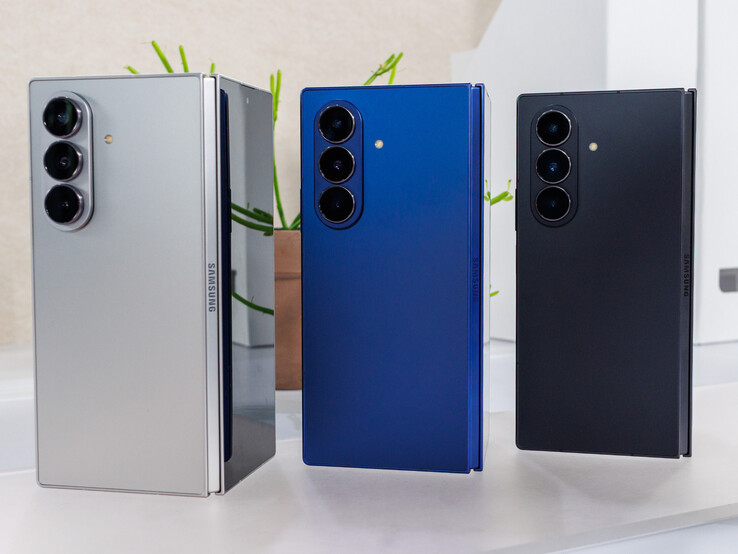














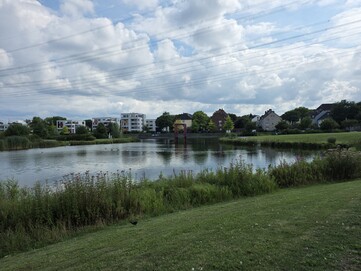








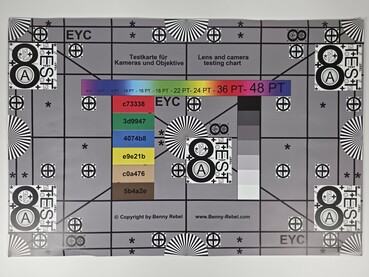

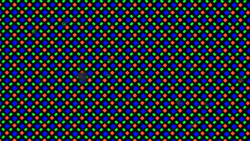
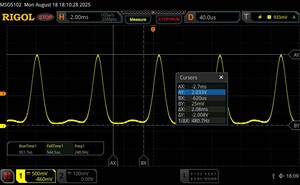
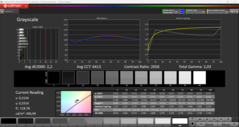


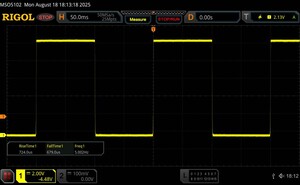
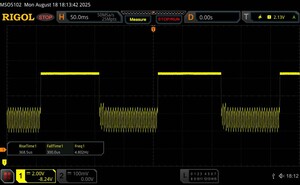


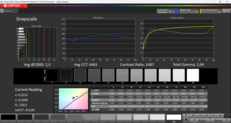




 Total Sustainability Score:
Total Sustainability Score: 


